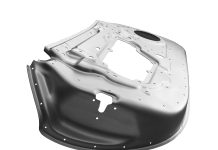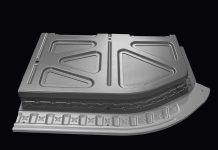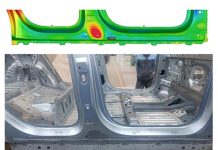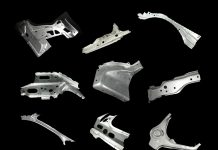The Inside Scoop of HOW Assembly and Forming Simulations Together Create a Better World
for Auto Manufacturers
Some people you never see again. They leave looking for greener fields in the automotive industry.
But our Burkhard Ravagni is like a boomerang, which came flying back to AutoForm with new experience. It’s not every day that someone leaves AutoForm only to return years later so we had to find out the background story and ask ‘what new insights did you learn during your time away?’

His story started at AutoForm in 2001, working as a Sales Representative. ‘I did typical sales duties then, as part of a team, working with application engineers with software applications in order to help identify request and channel them in tangible form so they might enter into development. I wrote proposals and closed the deals and enjoyed the nitty gritty of customer and contract details. During this time I opened up the Austrian market for AutoForm and closed large deals.’
He progressed becoming an extended manager, overseeing six staff as team leader in 2012.
But along came 2015 which offered an alternative path working for Simufact. Like any person serious about their career you start to ask ‘what is my role here? Is this really what I want?’ Burkhard took the leap of faith and changed over to Simufact, leaving AutoForm seemingly for good.
Simufact is based in Hamburg, and is very strong in metal forming; yet covers an entirely different field from AutoForm; you wouldn’t say the two are in competition at all. The shift in career allowed Burkhard to dive into assembly simulations and interestingly the OEM customer base were the same companies and faces he had dealt with in his AutoForm job.
‘AutoForm customers plan the production of single sheet metal parts, whereas Simufact allows customers to run simulations that predict distortions occurring during joining those fabricated parts together.’ says Burkhard. ‘Typically the main question is how to avoid distortions in the sub-assembly and sub-frame systems, and you can certainly use clamping procedures just to avoid a certain amount of distortion. But it is equally important to identify the part and the process which is causing the discrepancy. Parts might be over-crowned or over-bent which trigger deformations further down the line during assembly once spot wielding or mechanical joining has taken place.’
 Burkhard gained some impressive overviews having now worked in both part forming simulation and assembly simulation companies. Both AutoForm and Simufact are experts in their own field, and it’s safe to say that AutoForm deals with eliminating deformations during sheet forming, and when parts are done incorrectly it has a knock-on effect that would show up during assembly simulations.
Burkhard gained some impressive overviews having now worked in both part forming simulation and assembly simulation companies. Both AutoForm and Simufact are experts in their own field, and it’s safe to say that AutoForm deals with eliminating deformations during sheet forming, and when parts are done incorrectly it has a knock-on effect that would show up during assembly simulations.
At present assembly simulation is a growing market. Those companies that have started assembly simulations ‘have strong AutoForm departments as well, and the accuracy of assembly is increasing when you keep in mind the forming results achieved beforehand for those parts.’
This caused Burkhard Ravgani to reflect on his roots at AutoForm. He says. ‘Even while working with Simufact I was still cooperating with AutoForm, as our customers requested an interface that would incorporate AutoForm data. For example, after the forming process has been carried out – Simufact can import the thinning parameters of the geometries into their assembly simulations to help ensure that the accuracy of their own results increases.’
Such experience is highly valuable and Burkhard seized the opportunity when offered another job back at AutoForm. Naturally we were very interested in his newfound assembly experience so the career development was a win-win situation on all quarters; assembly and part forming coming even closer together, both parties establishing the importance of simulation in their own areas.
‘It was a warm welcome back at AutoForm. No-one gave me the impression that I had made any kind of mistake by leaving, and in the finish I have a broadened perspective of the industry.’
This speaks in volumes about the AutoForm company culture. Today, Burkhard works in the area of Planning Solutions at AutoForm, working on business development planning, focusing primarily on just one of our major customers. ‘We try to understand the planning process inside this major producer and then adapt our own products to help offer better solutions to fulfill their needs.’
It’s nice to have one of our own return to the flock. Thank you Burkhard for this background story.
For those also interested in a career at AutoForm, visit our careers page here.














Great, work by Burkhard Ravgani. keep it up.